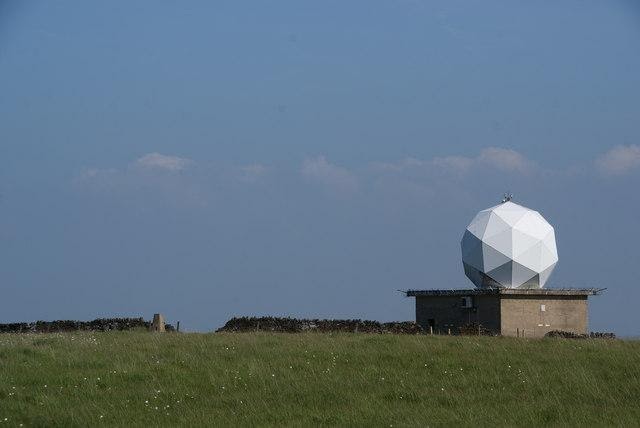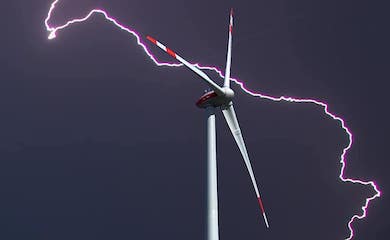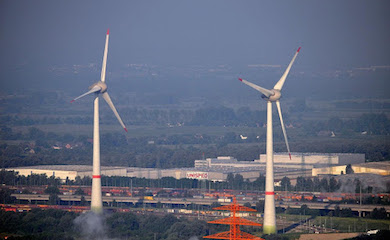Background
Wind turbines interfere with radar systems. The worst affected radar are those used by civil and military authorities for air traffic control and air defence. Weather services, however, can also be affected by wind turbines when their radar detect and display returns from wind turbines.
How Meteorological radar works
All radar work by sending pulses of radio energy and then building a picture using weak radio signals returned from the objects or substance of interest. In the case of meteorological radar the substance of interest is precipitation or rain. Heavy rainfall causes a higher level of radio energy to be reflected back whereas light rain or mist causes lower signal levels. The weather maps we see on television are often derived from meteorological radar which slowly scan the skies to a range of more than 250 kilometres from each radar head.
Typically meteorological radar scan horizontally and at higher angles so that they can build a profile of precipitation as it falls bearing in mind that precipitation forms at varying altitudes and can sometimes evaporate before it hits the ground.
Figure 1: Hameldon Hill weather station.
How wind farms affect meteorological radar
When wind turbines are illuminated by the beam of a meteorological radar they reflect radio energy back towards the radar. This reflected energy may then be displayed as mist or precipitation by the radar leading the radar to report more precipitation then there actually is.
Mitigation
There are a number of methods for mitigating the impact of wind farms on meteorological radar. The choice of mitigation solution can depend on the level of technical and operational impact as well as the availability of other meteorological radar serving the area.
Safeguarding distance
Meteorological radar may be safeguarded from wind farm development to a distance of 30 kilometres from the radar head. In most cases developments within 5 kilometres of the radar are unacceptable – particularly if the wind turbine is higher than the radar.
About Pager Power
Pager Power can help wind farm developers manage potential objections due to meteorological radar. For more information please contact us.




